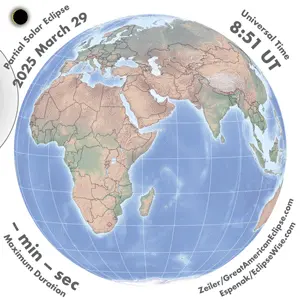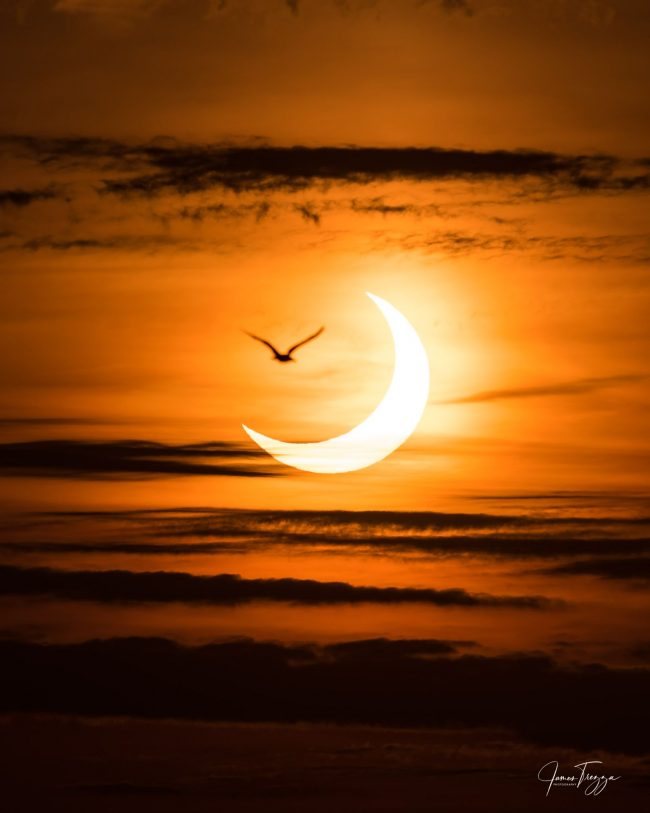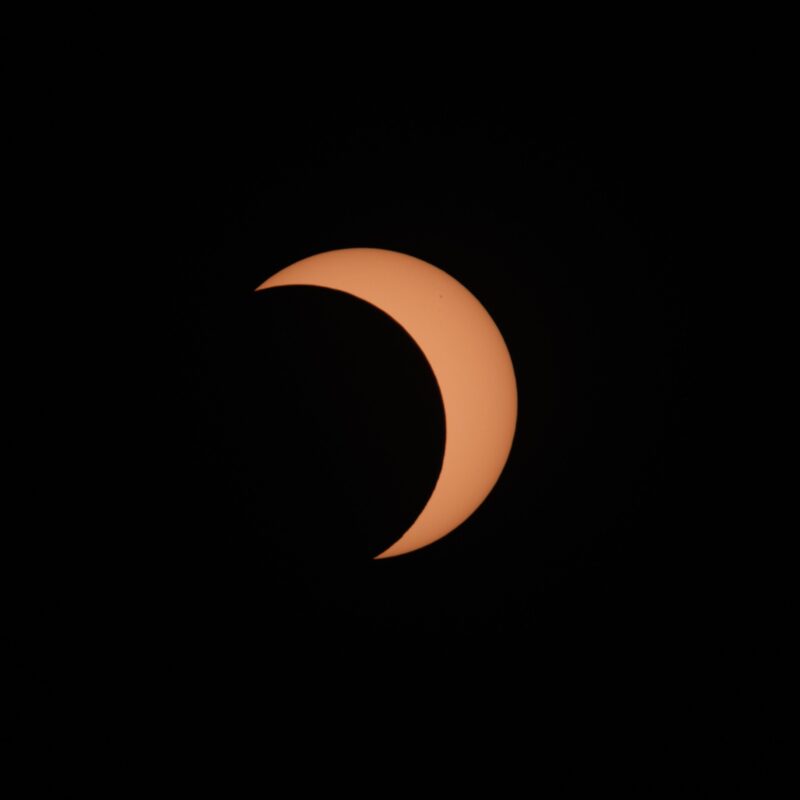Our friends at Timeanddate.com will be livestreaming this eclipse. Watch in the player above.
March 29 partial solar eclipse
When to watch: Maximum eclipse is at 10:47 UTC on March 29. Then 93% of the sun will be hidden behind the moon. Note: this is a very deep partial eclipse. When you’ll see the eclipse begin and end in your sky depends on your precise location.
Where to watch: The partial solar eclipse of March 29, 2025, will be visible from northeastern North America, Greenland, Iceland, the north Atlantic Ocean, most of Europe and northwestern Russia. Most of the continental U.S. will still be in darkness when this eclipse takes place. It’ll be early in the morning by our clocks, on March 29. So most of the continental U.S. will NOT see this eclipse. But a few people will see it! For example, in New York City, a less deep partial eclipse will be visible at sunrise. But, from there the eclipse won’t be so deep. The moon will appear to cover only about 22% of the sun. Practice eye safety when watching.
Eclipse duration on March 29: The eclipse begins near the northern coast of South America at 8:50 UTC. The deepest part of the eclipse is at 10:47 UTC. The partial eclipse remains visible through the last location – far northern Siberia – until 12:43 UTC.
If you’re in one of the viewing areas, click here to find the time of the eclipse for you: https://www.timeanddate.com/eclipse/in/
If you’re not in the viewing area, try one of the eclipse livestreams above or below:
Eclipse gazers Deborah Byrd and John Goss give you 10 reasons to love this eclipse … even if you can’t see it! Watch the video above or on YouTube.
The Royal Greenwich Observatory is also livestreaming the eclipse. Watch in the player above.
Just remember, the number one rule for solar eclipse observing is that you must protect your eyes. You must use an appropriate filter, which you can purchase from the EarthSky Store.
Or try these tips on safe solar viewing.
Cities where the partial solar eclipse is visible

EarthSky’s Marcy Curran offers this short summary of the March 29, 2025, partial solar eclipse, including ways to view it.
Moon, constellation, Saros
This partial solar eclipse occurs less than a day (0.8 days) before the moon reaches perigee, its closest point to Earth. So this is a supermoon eclipse.
This is not a total eclipse. So the sky will not darken enough for you to see stars. But if you could see stars, you would find that – during this eclipse – the sun is in front of the constellation Pisces the Fishes.
The eclipse belongs to Saros 149 in the Saros catalog of eclipses that describes their periodicity. It is number 21 of 71 eclipses in the series. All eclipses in this series occur at the moon’s ascending node. The moon moves southward with respect to the node with each succeeding eclipse in the series.
Read more from Fred Espenak’s Eclipsewise.com: Partial solar eclipse of March 29, 2025
Upcoming eclipses and eclipse seasons
The current eclipse season has two eclipses. This partial solar eclipse was preceded by a total lunar eclipse on March 13-14. They are part of the first eclipse season of 2025. An eclipse season is an approximate 35-day period during which it’s inevitable for at least two (and possibly three) eclipses to take place.
The second eclipse season of 2025 will fall in September. There will be a total lunar eclipse on September 7, 2025, followed two weeks later by a partial solar eclipse on September 21.

Maps and data for March 29 partial solar eclipse
Orthographic map: partial solar eclipse of March 29, 2025. Detailed map of eclipse visibility.
Google map (scroll down): partial solar eclipse of March 29, 2025. Interactive map of the eclipse path.
Circumstances table: partial solar eclipse of March 29, 2025. Eclipse times for hundreds of cities.
Saros 149 table: data for all eclipses in the Saros series.
Additional tables and data for this event.
Timeanddate.com March 29 partial solar eclipse.
In-the-sky.org March 29 partial solar eclipse.
Animation of the March 29 solar eclipse

Here’s what a partial solar eclipse looks like


Bottom line: Watch the deep partial solar eclipse on Saturday, March 29, 2025, at EarthSky. Or join our expert eclipse watchers for more.
How to safely observe a partial solar eclipse











